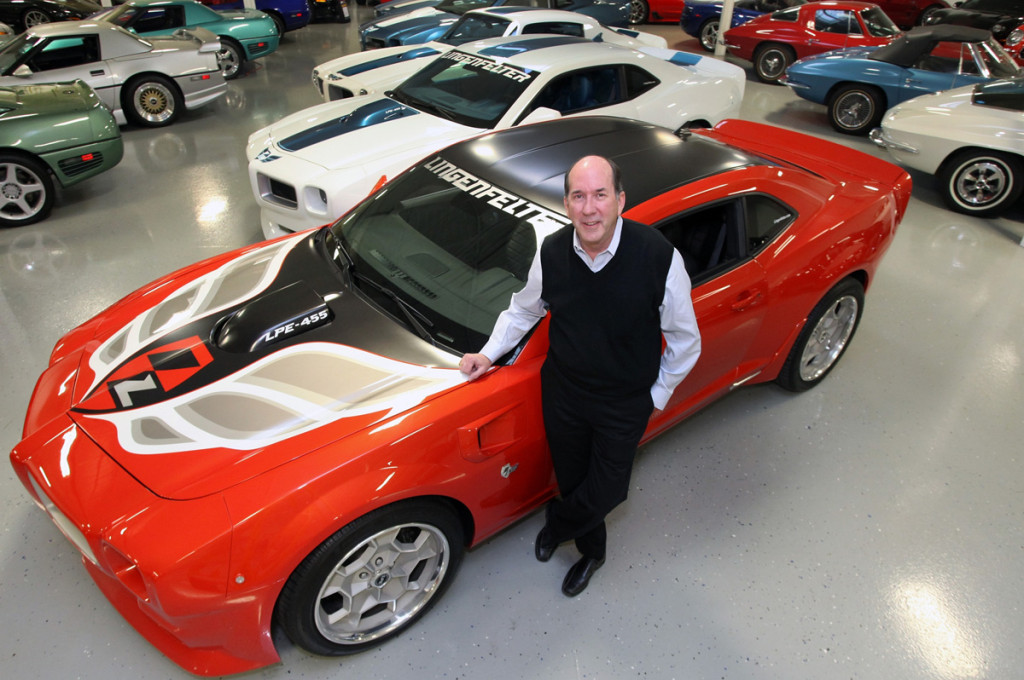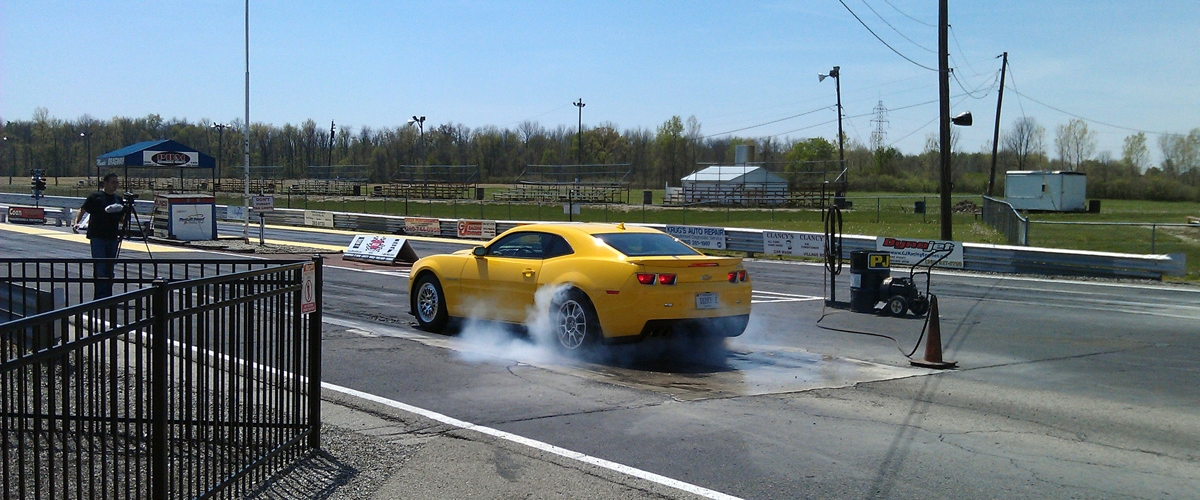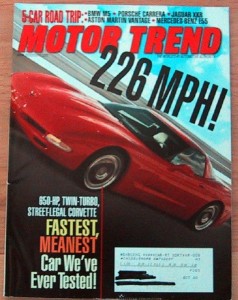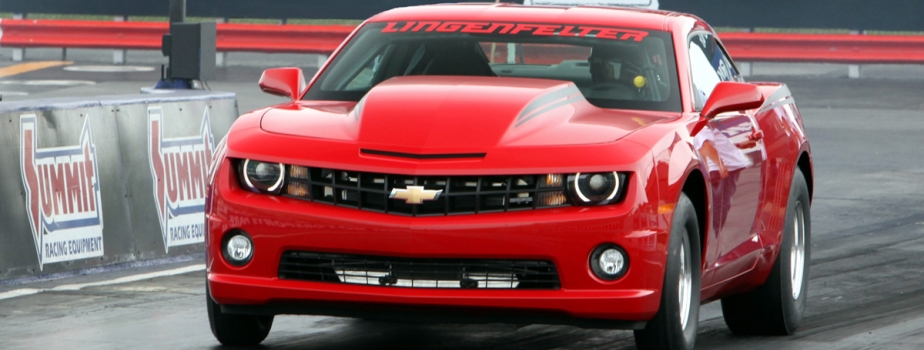Ken Lingenfelter: Interview Exclusive

Over 40 years ago a talented gearhead and gifted driver by the name of John Lingenfelter founded Lingenfelter Performance Engineering. He saw a need for quality, reliable, go-fast parts and performance cars. John rose to the challenge and created a company that would one day achieve legendary status.
In the subsequent years John not only took the company to new heights, but he also fed his own appetite for speed by drag racing. He took on many different classes. From Super Stock and Comp door cars to Econo dragsters and Pro Stock Trucks. He was the first Comp driver to break the 6-second barrier in the Sport Compacts class. John won 13 NHRA titles during his colorful career until he unfortunately left us doing what he loved, drag racing. In 2002 at the NHRA Sport Compact World Finals in Pomona, Ca. John lost control of his Cavalier and ultimately passed away from the injuries sustained in the crash.
In 2008 John’s cousin, Ken Lingenfelter, the son of a GM executive, purchased the assets of Lingenfelter Performance Engineering and continues to carry the torch to this day. Along with continuing LPE’s pursuit of performance perfection, Ken also curates the Lingenfelter Collection: a massive stable of over 100 exotics, muscle cars, hot rods and various Lingenfelter customs.
Although Ken is a busy man running one of the most successful automotive performance companies in the world, he sat down with LS1Tech for an exclusive interview.
When you bought the rights to Lingenfelter and took the reigns, what did that feel like knowing there were such large shoes to fill?
John was a famous drag racer and was larger than life. He built the company on a strong foundation of building high horsepower engines and great cars. Since buying the company, I have worked with the team to continue to grow and expand on these principles. The industry has changed a lot in the past few years. It has presented challenges, but we have proven successful in overcoming them.
Everyone at Lingenfelter works to stay on the leading edge of vehicle performance. Having a strong brand has been really important, and John left us with that. We continue to expand the products we offer, increase the power available and deliver the dependability Lingenfelter is famous for. I think John would be proud of what we are doing with the company he founded.
What are your thoughts when people say pushrod motors are dead?
When GM released the LS1 in 1997 almost everyone said GM was crazy for building a pushrod, 2 valve per cylinder engine. Time has proven the naysayers wrong, and that GM in fact made the right decision. The same basic engine foundation has been used for the GEN 3, GEN 4 and now the GEN 5 small block engine. In my opinion, GM recreated all the success of the original small block.
How has the new wave of factory forced-induction GM cars changed the game for the aftermarket?
The factory supercharged engines have allowed the aftermarket to build even more power. If you went back 10 years and told people you could have a daily driver with 750 hp they would have thought you were crazy. We build cars with power like this every day, and people drive them every day as well.
Give us your opinion and thoughts on the 5th Gen. Camaro. What do you say to the people who prefer the 4th Gen. chassis and complain the 5th Gen. is too heavy and un-aerodynamic?
When the 5th Gen. Camaro was released some people were slow to accept the radical departure from the traditional Camaro. The external size, independent rear suspension and the weight were all complaints. All these were vastly different than the 4th Gen. Camaro, and the closest competitor, the Ford Mustang. I believe the changes were product decisions GM made to meet either government mandated requirements or customer expectations. People expect a lot more from a car today than they did even in 2002 when the last 4th Gen. Camaro was built. Although I love the 4th Gen ?F? cars, owning a number of them, they were not discontinued because sales were really strong.
What did it take to be the first company to get a ZL1 Camaro into the 10s in the quarter mile and post a 200 mph top speed?
Our plan from the start was to be the first in the 10s and the first over 200 MPH. The Cadillac CTS-V shares the LSA engine with the ZL1 Camaro and we already had a lot of experience with it. We CNC ported the factory heads, added our GT9 camshaft, installed our ported supercharger inlet and changed the supercharger pulleys. We ran it on 109 octane fuel more for the safety than the requirement. Everyone at Lingenfelter was very proud to be the first ZL1 in the 10s. We had previously done the same with the ZR1 Corvette and the Camaro SS. With both of these, we went on to be the first in the 9s and into the 8s with the Camaro SS the 8. Running over 200 mph with the ZL1 was especially exciting for us. Chevrolet announced that the top speed for the ZL1 was in the low 180s. Ford had claimed the Shelby GT500 would run over 200 mph. Everywhere you looked, Ford owners would hold the 200 number over the heads of Camaro owners.
We knew our enhanced ZL1 would run over 200, we just had to prove it. Working with Hot Rod magazine, we planned to do exactly that. Continental Tires offered their test track in Texas, a 8.5 mile oval, for us to use. The corners are 3 miles each with 1-? mile long straights. They use the track for extended duration runs to test tire wear and isn’t designed for high-speed runs. On test day, we faced almost every challenge the facility could throw at us. The air temperature was in the 90s with gusting crosswinds up to 25 mph on a track with 50-year-old pavement and no banking. After numerous runs, including one where the data recording equipment shut off at 199.9 mph, we ran 202.67 mph and proved that the ZL1 could go over 200 mph.
Hard one, but what is your personal favorite GM vehicle and why?
My favorite GM vehicle to drive is the ZR1 Corvette. It is a blast to drive, comfortable to ride in, and attracts attention everywhere you go.
On that note, what is your favorite LS motor and why?
I really like the LS7. There is just something amazing about the sound of 427 cubic inches at 7500 rpm.
What’s it feel like to have legendary cams like the GT2-3 and the GT9?
The GT2-3 and GT9 camshafts have proven themselves over the years in a number of different applications. When we developed them, a number of different designs were tested. Based on the power they make, and how drivable they are, we were sure they would be very successful in the industry.
Everyone wants to know why the GT2-3 cam works so well with Magnachargers. Was it developed with forced induction in mind?
It was designed for use in N/A and boosted applications. As is the case with many of the products we offer, we design and engineer them with exclusive features to make them perform at a higher level.
What are you hoping will be improved in the 6th Gen. Camaro?
I hope GM finds a way to reduce the weight and keep the power. I hope they make it handle even better than the 5th Gen and make it faster as well.
What’s the best bang-for-your buck modern GM car on the used-car market?
For the readers who want an LS-powered car but can’t afford a new Camaro, Corvette etc. I believe the C5 Corvettes are the best buy on the planet. I regularly see nice ones for sale in the low to mid teens. If you can afford a little more, stepping up to a Z06 is a great option. They have LS engines, handle great, drive really well and deliver amazing fuel economy. There is a lot of aftermarket support and best of all, they are a Corvette.
What is the best part of the LS line of motors?
It would be impossible to define the LS engine with only one strong asset. GM hit every mark with the design. They are less expensive to build than their competitors, make more power, are easier to assemble and can be packaged into almost any vehicle. The aftermarket support and customer desire, is directly related all these things.
Where do you see the modern LS scene going?
I believe people want more from their vehicles than ever. Many want to use their car (or truck) as a daily driver, for drag racing, autocross, road course and for road trips. We are seeing larger numbers of people participating in all types of competitions all across the country.
The LS engine has become the number one swapped engine. We see them in almost every vehicle ever made. Street Rods, muscle cars, race cars, trucks, imports, you name it and people are putting an LS in it.
Tell us about the Lingenfelter flat-plane crank motors.
Engines with flat plane cranks are not new. Domestic manufacturers don’t use them, but many of the exotic engines are designed with flat plane crankshafts. Typically they are capable of much higher RPM. We have been developing this technology in our Real Street Camaro drag car. Without sharing specifics, the results are positive. We have customers looking to purchase flat plane engines and offer them on a case-by-case basis.
How do you arrive at the different crate engine combos?
Our crate engine combinations are targeted at specific areas of the market. Price is always a consideration, but we will never sacrifice durability for cost. When people purchase a product from Lingenfelter, they expect it to be the best. We deliver that in everything we do.
The crate engine market continues to grow. We currently offer off-the-shelf engines up to 750 hp. In the very near future we will release 900 hp and 1000 hp crate engines. They are not cheap, but if you want dependable power at these levels we offer it. If 1000 hp is not enough we can custom build an engine to pretty much any power level the customer wants.
Would you say cathedral port LS heads are dead?
They are not dead. They are still a great option for smaller cubic inch performance LS engines. We offer CNC ported versions and Edelbrock offers new heads with Lingenfelter CNC ports off the shelf. If you have a 5.7- or a 6.0-liter LS engine they can make great power without spending a lot of money. However, if someone is building a 6.2 engine or larger they would want to consider rectangular port heads.
Do you remember any of the Motor Trend and Car and Driver shootout cars from the late 90s-00s? They were huge back then? How big of a deal was it to Lingenfelter and to what extent did you guys prep for those competitions?
In the 90s, factory performance cars were gaining power, but very few were capable of putting up the big numbers. That is where shops like Lingenfelter came in. Adding one of our packages to a Corvette or Camaro would really wake up the power. Our twin-turbo engines raised the bar higher than many thought possible for daily-driven vehicles. The cars that we supplied were very well set up. Safety is always a major concern, especially when you are going fast. The cars were equipped with the necessary safety equipment, and speed-rated tires. They had as much power as we could give them, without sacrificing dependability. There was no value in being the fastest for half the event if you can’t finish.
In a little ?where are they now,? what happened to those infamous Motor Trend/Car and Driver shootout cars?
I know where many of the famous ?Lingenfelter? cars are. A few are part of the Lingenfelter Collection. The Corvette we raced the Blue Angels with, one of the C-4 wide body ZR-1s and a few others are here in the collection. As other significant Lingenfelter cars become available I hope to be able to add some of them to the collection as well.
Out of all the Lingenfelter vehicles to roll out of the facilities, what are some of your favorites and why?
My favorites would include the Cadillac CTS-V, ZR1 Corvettes (both old and new) and anything with our 660 hp LS7 engine.
The CTS-V’s are fantastic cars. They are fast, they handle well, come with Brembo brakes and have great looks with top-of-the line luxury.
The ZR1 Corvette does everything well. Add that on a 6-to-3 downshift at about 80 mph, it will spin the tires. That is just plain fun. The original ZR1 Corvettes with the LT5 engine were the most advanced Corvette at the time. We were one of the first modifying these engines, and we still continue to advance the power they can make. Every hot rodder loves the sound of a big camshaft. Our 660 hp LS7 engines have the perfect sound. At idle they announce to the world they are ready to run.
What do you think the new direct-injection era of GM LT motors will mean for Lingenfelter and the rest of the aftermarket?
Direct injection will present challenges to the aftermarket. These challenges are not uncommon with new engines, but the complexity of the LT1 will add to them. In addition to the engine, the engine control module is all new. I know we will solve the challenges, as will others. As of today, I don’t believe anyone outside GM has enough access to even understand all the challenges. We have a development plan, and are working through the opportunities. You can look for Lingenfelter to be one of, if not the first, to have real products available for the new LT1.
What are the mods that net the biggest improvements in performance on the 5th Gen. Camaros?
How about the ZL1s? Depending on the planned usage of the Camaro, we see the largest improvements with superchargers, suspension upgrades and engine replacements. These cars are heavy, around 4000 pounds, and even with 400+ hp from the factory, they feel slow. They really respond to adding additional power. Of course, the faster they are the better they need to handle. We offer suspension packages designed for different uses. If people are more interested in drag racing, we have a suspension system for that. If they are more interested in turning corners, we have a package for that. If they want more performance, we have components for that as well.
What vehicles are in your personal stable? How about your daily driver?
There are over 200 cars in the Lingenfelter Collection. It is made up of about 30% exotic cars, including a Bugatti Veryon, Lamborghini Reventon, Saleen S7, Ferrari Enzo and many others. Another 30% is made up of muscle cars like Yenkos, Shelbys, GTOs and HEMI-powered Mopars. The remaining 40% are Corvettes and Lingenfelter cars. We have Corvettes from 1953 through 2013.
Unlike many collections, I like to drive the cars. Every vehicle here is drivable and most are driven from time to time. Even the rarest cars of the collection see some road time.
My daily driver changes almost daily. When the weather is bad I usually drive something with AWD. I have a supercharged Escalade for the really bad weather. When the weather is nice I really enjoy driving my ZR1 Corvette.
Any other hobbies outside cars?
People have hobbies other than cars?
Do you find time to hit the track? If so, is it the drag strip, open track or autocross?
I don’t think any car guy ever has enough time on the track. In my past, I spent quite a bit of time drag racing. Lately I have spent more time on road courses than the drag strip. For the last couple years I have run in the Sand Hills Open Road Challenge. They do a one mile shootout and a closed highway run. Both of these events are a lot of fun, and I do my best to attend.



